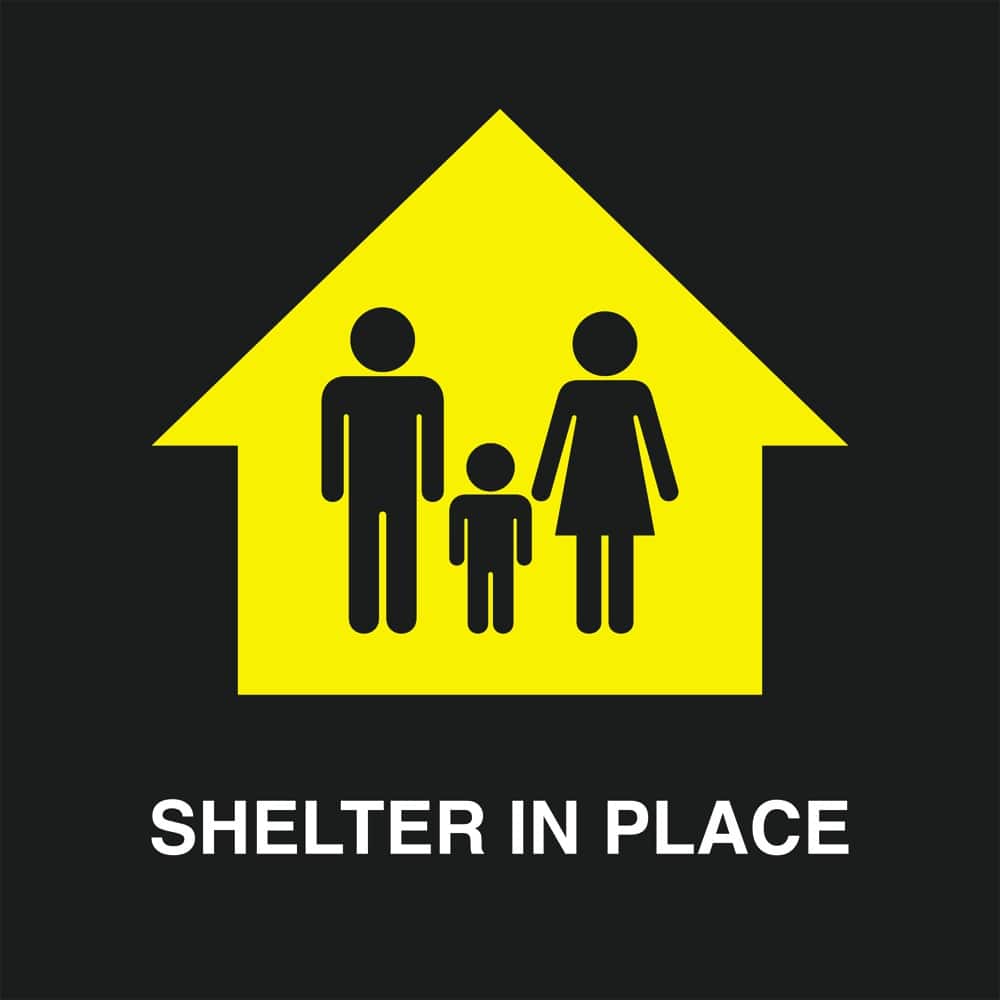
How to Cope with Shelter in Place Orders
With the rapid spread of the novel coronavirus, COVID-19, many cities, counties and states have issued shelter in place orders. Depending on the location, the orders may be called “stay at home” or “safer at…
With the rapid spread of the novel coronavirus, COVID-19, many cities, counties and states have issued shelter in place orders. Depending on the location, the orders may be called “stay at home” or “safer at home” orders. No matter what they are called, the idea is the same – limiting contact with others is the best way to prevent the spread of the coronavirus.
There is a lot of misinformation and sensationalism floating around the internet and media right now, which doesn’t help American’s feel at ease with shelter in place orders. Many people are worried that they will be on lockdown, unable to leave their homes. Others are concerned about how they will get supplies or care for their families.
At MedMalFirm.com, we want our readers to be informed and feel as secure as possible during these troubling times. Our Houston medical malpractice attorney has gathered useful and legitimate information about shelter in place orders and how to cope with them. We hope that you will find this information helpful as you and your family take measures to stay well.
What is a Shelter in Place Order?
A shelter in place order is not the same thing as a lockdown. Yes, it is a scary phrase and definitely relates the serious nature of the coronavirus outbreak. A shelter in place order means to take shelter wherever you are. In some cases, that means work, home or school. In most cases, it means that Americans should avoid non-essential outings. You are still allowed to go to the grocery store, pick up medications, take your family to the park, or get supplies that your household needs.
The detailed rules of shelter in place orders vary depending on the area. With the coronavirus outbreak, the rules vary depending on how many people are infected and how many people are at risk for exposure. Some of the rules include:
- No gatherings of more than 10 people.
- When out in public, maintain six feet between you and others.
- Only go to stores for necessities. Avoid “window shopping” or shopping for frivolous things.
- If possible, work from home. Many businesses are required to allow 75 percent of their workforce to work from home.
- Avoid going to restaurants or bars. Use takeout or food delivery services.
- Do not travel, including by vehicle, motorcycle, bicycle or public transportation.
- Do not visit hospitals or nursing homes.
This list is not exhaustive. Many cities, counties and states are adopting their own rules based on the needs of their communities. It is important than Americans stay up-to-date on shelter in place rules in their community. In some jurisdictions, violating the order is a misdemeanor punishable by a fine or imprisonment.
Common Reactions to Shelter in Place Orders
Yes, a shelter in place order is frightening and is a clear indication of just how serious the nation’s situation is. People react to this situation in many different ways. According to the American Red Cross, it is important to understand the natural reactions and how to cope with them. The Red Cross says that it is normal for Americans to experience any of the following:
- Anxiety
- Uncertainty
- Concern about the safety of ourselves and others
- Frustration due to the unknowns of the situation
- Frustration due to media inconsistencies
- Confusion due to misinformation and rumors
- Guilt about being unable to fulfill normal responsibilities
- Boredom or “cabin fever”
- Thoughts of worry, fear or blame
- Concern about losing income
- Concern about meeting financial obligations
- Problems focusing or staying on task
- Changes in appetite, activity level and sleep patterns
With the nature of current shelter in place orders, many individuals are feeling a combination of these emotions. In order to stay well and safe, it is important to realize that these are natural responses to an extremely challenging situation. The best thing you can do is realize that it is okay to feel out of sorts right now, and take steps to cope appropriately and healthily.
How to Cope with Shelter in Place Orders
Sheltering in place can feel like isolation for many people. Even families who are sheltering together can feel overwhelmed as they deviate from their usual routines. Children especially may find it difficult to be away from their friends, family members and teachers. Fortunately, there are measures that you and your family can take to cope with a shelter in place order. Some ideas include the following:
Stay Informed
It is important during a time of national emergency to stay informed about what is happening in your community. However, the Red Cross encourages you not to be overexposed to news. Overexposure to news – especially bad news – can increase your stress, anxiety and fear. It is also important to remember that children are more vulnerable to scary or tragic situations, so their exposure to news should be limited even more.
Remember Your Emotional Health
As you and your family shelters in place, remember to take care of your emotional health and needs. Everyone reacts differently to stressors, and it can be difficult to manage many different mindsets at one time. Make sure that everyone in your home has the attention and recognition that they need to maintain their emotional health. Recognize those who need more support and give adequate attention to each individual’s needs.
Remember Your Physical Health
People who shelter in place for more than a few days can quickly experience a drop in their physical activity. Try to offset this by doing exercises or activities at home. Get outside in your yard, or go for a walk. Remember to eat healthy and get plenty of rest. Avoid overindulging on alcohol or medications.
Maintain Contact with Loved Ones
One of the most significant benefits of our technological age is that sheltering in place does not mean being cut off from the outside world. Today, we can maintain contact with our loved ones via telephone, teleconferencing or video calling. Even though this does not provide the physical contact that we all crave, it can be a good source of staying in touch and connecting with our loved ones. Video calls, in particular, are a great way for children to stay active and in touch with their friends and family.
Get Creative with Children
Shelter in place orders can be particularly difficult for children. You can help your children cope with the situation by getting creative. Think of fun activities that you and your children can do to occupy their minds and hands. Keep children on a stable schedule, much as you would during the routine school year. Set limits and behavior goals, and reinforce positive attitudes and behaviors. Work with children on their schoolwork to help ensure that they are progressing.
Don’t Forget About Your Pets
Shelter in place orders are frustrating for humans, but we must also remember our pets. Pets get accustomed to a certain schedule and activities. When their routine is suddenly changed, they may experience anxiety or changes in behavior. Make sure that you monitor your pet’s wellbeing and needs. Talk to your veterinarian if your pet suddenly changes behavior or seems ill. When possible, make sure your pet has access to the outdoors and sunlight.
Helpful Resources During Shelter in Place Orders
If you need help coping with a shelter in place order, or are having a hard time finding legitimate and consistent information, consider the following helpful resources:
- Centers for Disease Control and Prevention (CDC)
- CDC – Information for Older Adults
- World Health Organization (WHO)
- The American Red Cross
- Live Science – Tips for explaining coronavirus to kids
- Live Science – Activities and online resources for children
- TIME for Kids – Offering free digital library to families
- Humane Society of the United States
